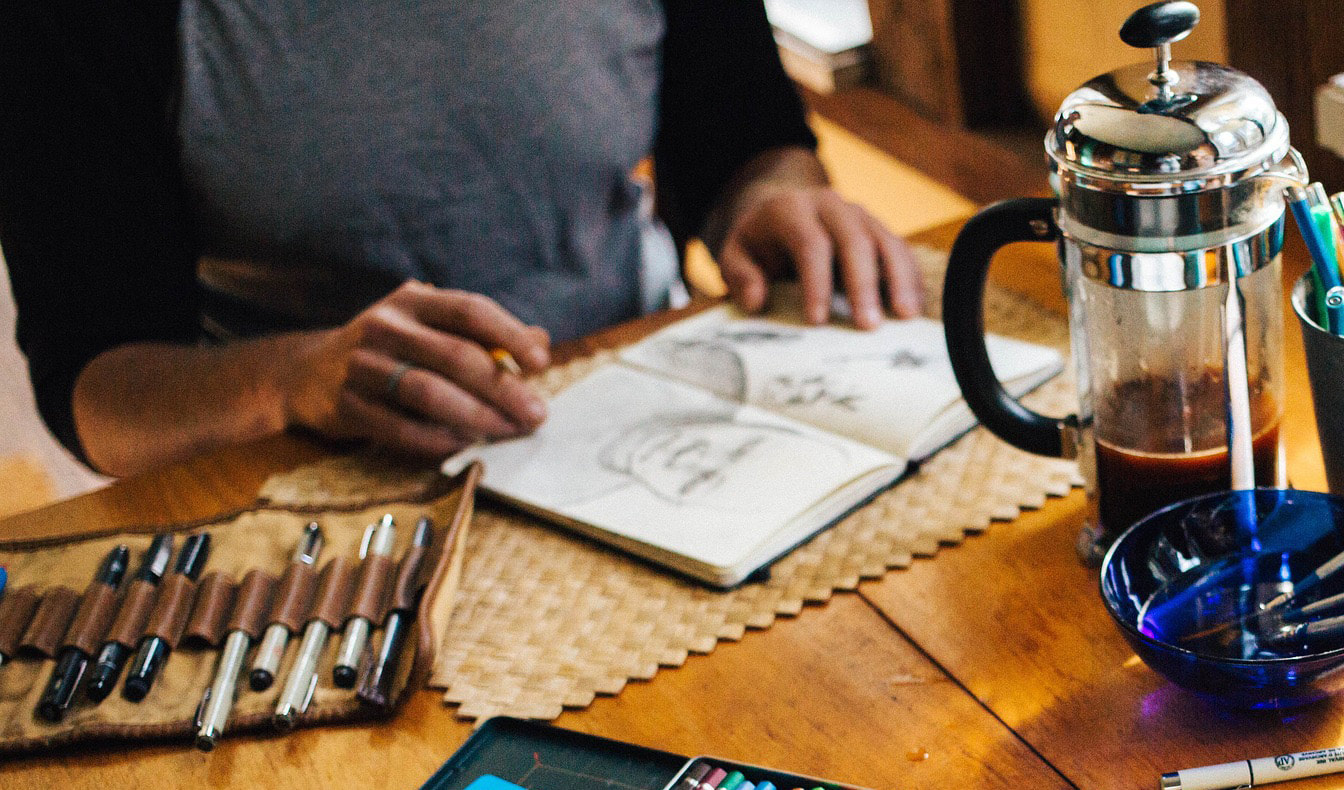
But there are a few rules that I believe are universal, and that far too many character designers seem to blatantly disregard.
Here are some practical, commonsensical tips you can use to make your characters' appearances feel more real and fit the characters better, without restricting your creative freedom to "their outfit must have X number of colors!" in the process.
Character design tip #1: The character's outfit should fit the situation.
This especially goes for people who design female characters.
OK, it goes for all genders, but fictional women seem to be the most frequent victims of character designers who pretend their creations are smart, strategic people, and then send them into battle moronically and suicidally underdressed.
If your badass supersoldier spy is going undercover at a cocktail party, sure, you can put her in a flattering dress.
But if she's going into battle with her cleavage bared, against opponents who won't be distracted by that sort of thing, you're ignoring the basic storytelling principles of keeping characters in-character and making their decisions plausible just to shoehorn in a bit of extra boobage.
Granted, there are exceptions to every rule. Having a fancy battle dress is practically a requirement for being a magical girl, and their magic powers tend to make up for the disadvantages their wardrobes present, so there is some leeway there.
(Though, come to think of it, I'd love to see a magical girl series where their transformation resulted in armor instead of dresses. That would be a smart, interesting twist.)
Anyway, back to character design tips.
When it comes to armor, if you're thinking of depriving your character of that protection so their movements won't be restricted, bear in mind that a well-constructed suit of armor has approximately the same range of motion as the person inside it.
So while you don't want a stealth-based character who needs to sneak around, slip through small spaces, or blend into crowds clanking around in full plate armor, a character on the battlefield needs a better reason than "I need flexibility" to go unprotected.
Also, if your knight with girl parts is wearing boobplate (a 'breastplate' that cups and emphasizes her boobs separately, as opposed to covering the whole chest in one smooth curve), her blacksmith needs to be fired for being bad at their job and recklessly endangering their customers.
Because boobplate is suicide.
Here are some practical questions you can ask yourself to determine what outfit is appropriate for the character's situation:
1. What is the goal of their outfit?
Are they trying to blend in? Look sexy (for a good in-story reason, NOT a meta-story "sex sells" reason)? Protect themselves in battle? Carry every high-tech spy gadget invented by every sapient species at once, just in case?
Their outfit should reflect this goal.
2. What resources are available to them?
If your character is dirt poor and unwilling to steal, they might not be able to acquire armor or fancy clothing. Unless, of course, they have a benefactor who's willing to help them, whether out of altruism or because it's required for the mission for which they're being hired.
Your character's clothes should reflect their era, their geographical area and its culture and available clothes, and their current and past financial situation.
I mention 'past financial situation' because they might, for example, still have nice clothes that they bought before their finances crashed. Their whole life needs to be taken into account, to the same degree to which their past influences their present.
3. What is the weather like?
Unless they ended up in a location they didn't expect to visit, or the weather changed suddenly, your character should be dressed for it.
Unless their wardrobe comes with built-in thermal regulation, they're innately temperature-resistant, or they need their suit of armor regardless of the climate, it makes no sense for them to have the same type of outfit in a tropical or temperate location and a snow-covered forest. (CoughBlackWidowCough)
When taking the weather into account, be sure to consider how much time the character has to prepare and acquire/pack clothes, whether or not they would see this kind of weather coming, and whether they'd have the resources to get appropriate clothing with the amount of notice they had.
Character design tip #2: The outfit should reflect their personality and abilities.
This is closely related to tip #1, but is distinct enough to warrant its own section.
If a character is cocky, unwise, rebellious, or wants to mentally throw the people around them for a loop, they might deliberately choose to dress in a way that's inappropriate to the situation.
For example, they might enjoy showing up in court with a pair of bunny ears on their head, or striding onto a battlefield shirtless because their healing factor will make up for it and the sight of their wounds healing will demoralize their opponents.
Or they might just charge into battle shirtless because they're way too hot-blooded and reckless to care.
But if a character is very serious and practical and has no superpowers, they should dress accordingly, especially when going into battle.
If a character is very comfortable with her body and sexuality, is too innocent to think much of showing skin, or simply doesn't give a crap what other people think of her, then it makes sense to have her show up in a crop top or revealing dress.
But if she's very shy or modest, or has openly expressed disdain for women who use their sexuality to get ahead in life, then showing her cleavage off will probably be out of character in most situations.
(CoughAerynSunCoughCleavageInBattleCoughWTFCough)
Their past, and the beliefs and coping mechanisms they developed as a result of it, should also play a role in your outfit decisions.
A character who's been sexually abused or assaulted might try to hide their body and attractiveness for fear of getting the wrong kind of attention. Or they might deliberately dress sexy in an attempt to reassert control over their sexuality.
Or they might just continue dressing the way they did before, whatever that way might be.
Once again, it depends on their personality and decisions.
Whatever clothing choices your character makes, the basic rule holds true: it should be in-character, and should fit their beliefs, personality, ability and situation.
Character design tip # 3: The character's body should fit their lifestyle and profession.
Can we talk about Lara Croft's arms? Her skinny little arms, with which she supposedly pulls herself up ledges? This woman should have some serious upper body muscle tone... but in some iterations, she doesn't.
This is an example of what NOT to do when designing a character, and it isn't just the ladies who get hit with it.
While females tend to be more consistently shoehorned into a single, sometimes implausible body type, characters of other genders have also been given this treatment.
Here are some examples of how a character's lifestyle might affect their physical appearance:
If your human character has a highly active lifestyle involving frequent feats of strength, give them the musculature they'd realistically require for the tasks they perform.
(Obviously, supernatural/alien/shapeshifting characters get some leeway here.)
If they frequently get into fights that involve cuts and/or burns, are not perfect at dodging, and don't have the medical technology or superpowers required to swiftly and flawlessly heal wounds, having some scars would be more realistic than their skin being smooth from head to toe.
If they live in a hot climate and are outdoors frequently, they should probably have a tan, unless they have a skin condition or wear clothing that prevents tanning.
For that matter, they should probably also have body parts that aren't tanned, unless they were out there nude.
Depending on their hair type, their hair might also get bleached by the consistent exposure to the sun.
If they use crutches or a manual wheelchair a lot, their arms should show the effects of the muscles being frequently exercised.
When you're designing your character's body, consider where they live, what experiences they've had, and what kind of activities they frequently do.
And for the love of all things holy (or at least, for the sake of plausibility, good-quality storytelling, and not making me roll my eyes at you), don't just design them for sex appeal in a way that makes no sense in light of their lifestyle or their past.
Please. Just don't.
Character design tip #4: Their voices should fit their background.
While watching Tangled and How to Train Your Dragon, I noticed a weird pattern:
The adults spoke with an accent that their children didn't share.
Rapunzel had never heard any voice other than Gothel's since she was a baby, yet for some reason, she never picked up her "mother"s accent.
And while the adult vikings all spoke with a Scottish accent, their children didn't.
This seemed weird and unrealistic enough to break immersion a bit, even in stories where hair glows, horses act like hyper-intelligent dogs, and dragons exist.
TL;DR: Keep your character designs plausible and in-character.
Sure, there are other, more nuanced and advanced facets of character design that someone who's studied the field in more depth could get into.
And even then, there would probably be exceptions to most of the rules they laid out, or rebellious try-hards who would take their "don't do this" as a challenge and find a way to make a maligned design practice work. (CoughProbablyMeCough)
But at the core of the process of designing your character, a simple, universal principle holds true:
Their appearance and wardrobe should make sense in light of their personality, environment and activities.
It's just that simple.






 RSS Feed
RSS Feed